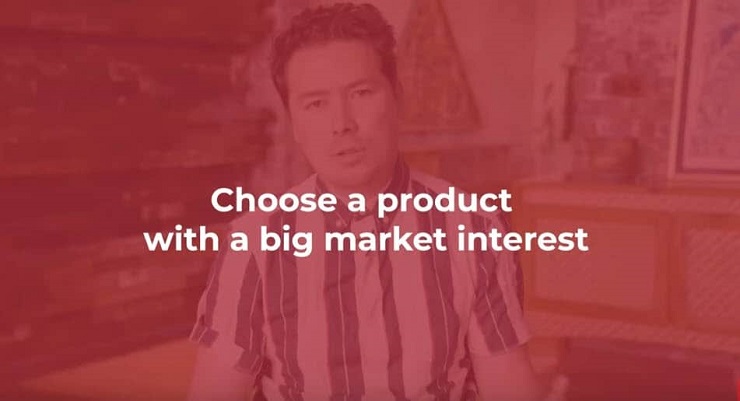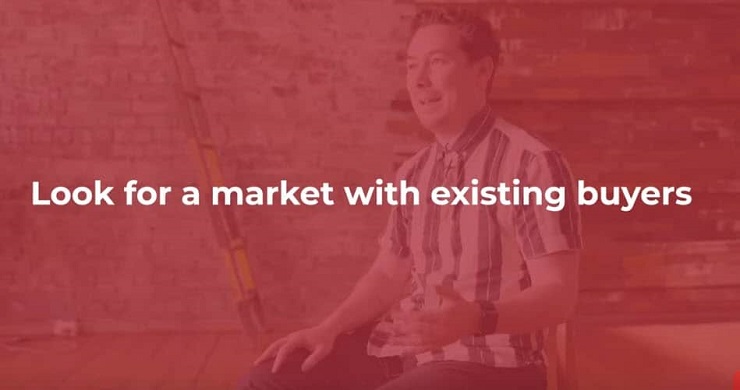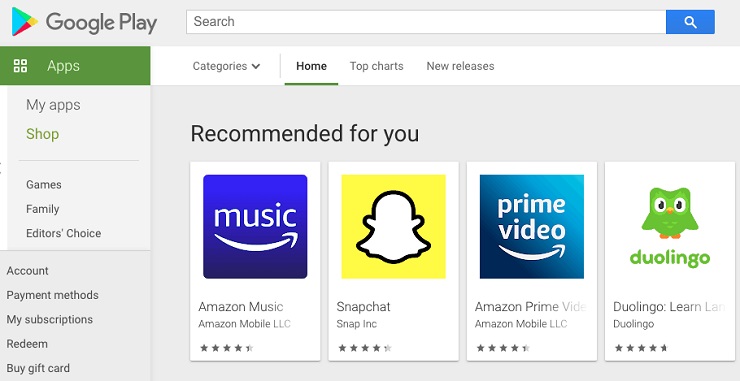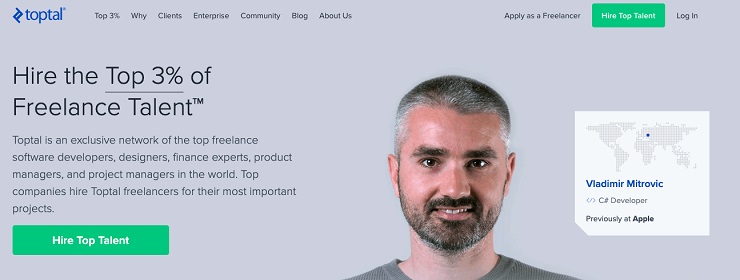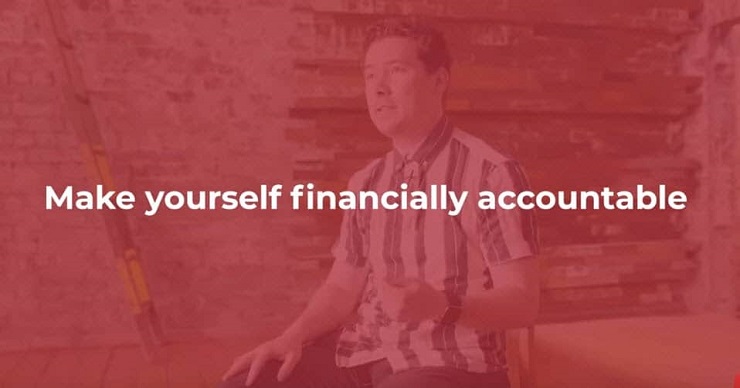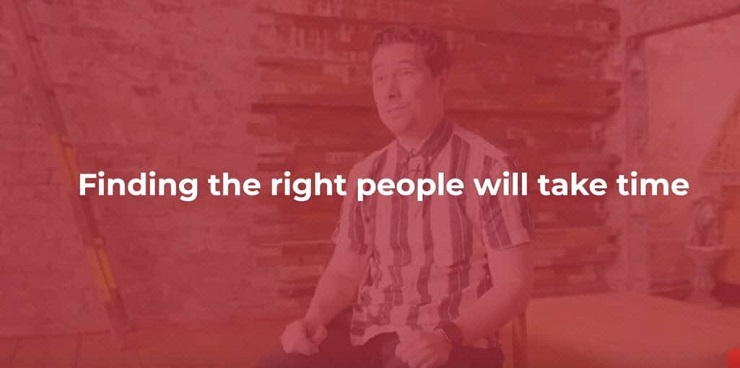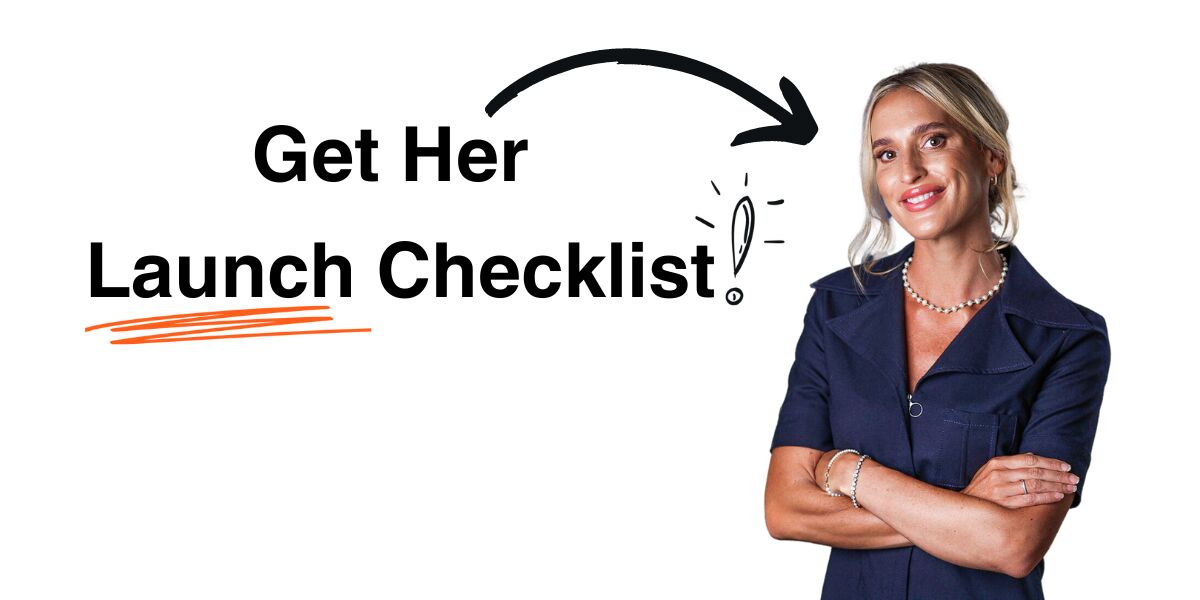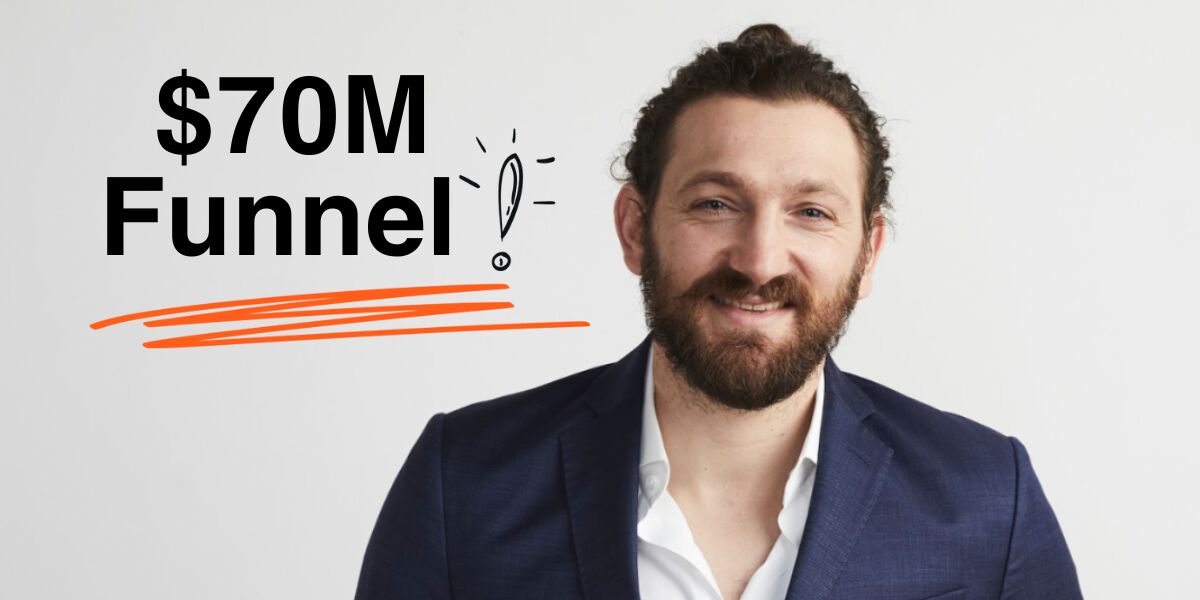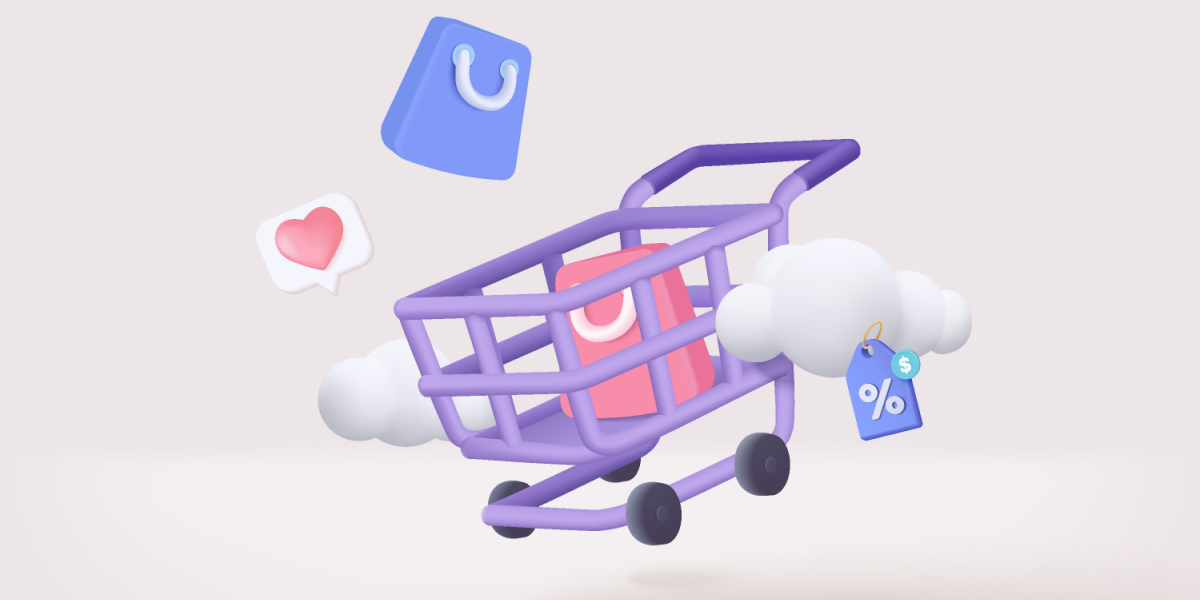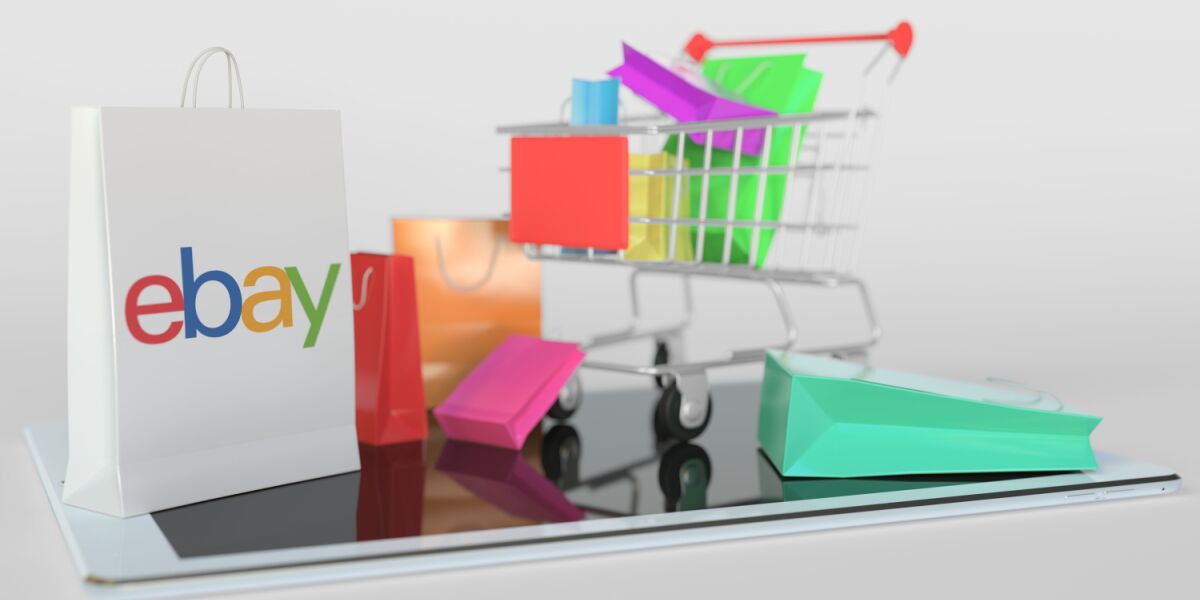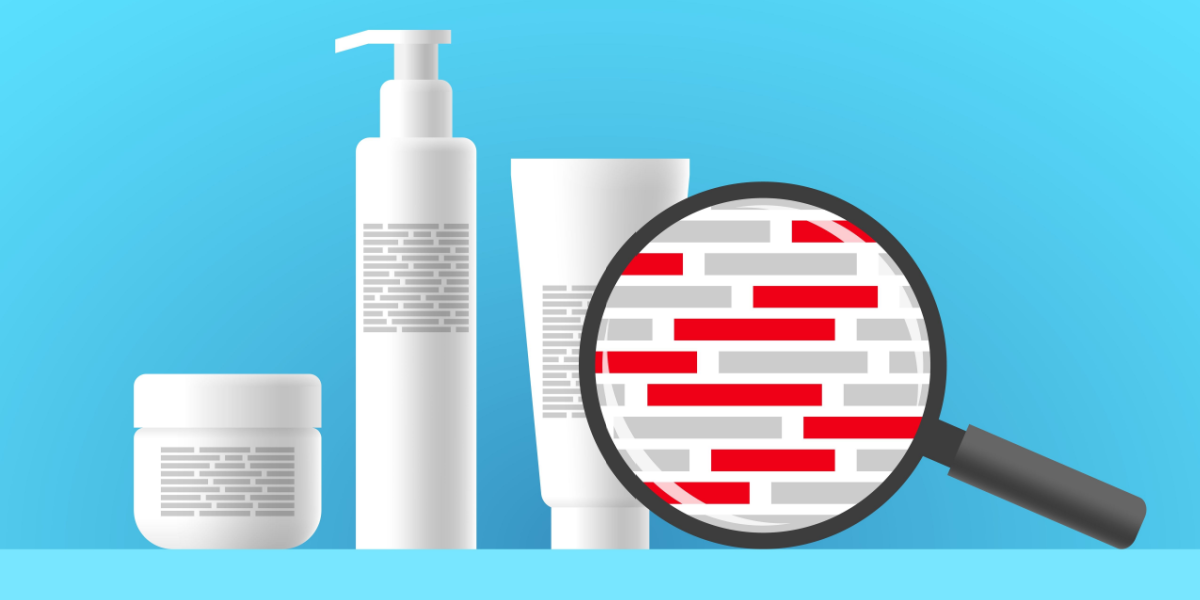When you look at a large business at the top of its game, it’s easy to fixate on the money it’s pulling in right now.
Seven figures or more a year may seem totally out of reach to you, but remember, that’s typically the end result of a long, winding process that took years to unfold.
Some businesses may take one or two years to get to the level of success you’re seeking, some may take a decade or more. The point is, success takes time.
Take a look at Foundr. We started as a one-person digital magazine produced by a guy who had no experience in the publishing industry. And yet, here we are, now a seven-figure business with over a dozen courses, two dozen employees, and a growing community of entrepreneurs around the world.
But if we rewind back to that first day of Foundr’s lifespan, you’ll see that it all started with two sales that amounted to $5. Yes, when Nathan launched Foundr, he made two sales and five bucks.
Nothing to brag about, but those five dollars made a huge impact on Nathan. They were the proof he needed that the magazine was much more than an idea, but a potential business that needed to be taken care of and grown.
Which is to say, making those first few dollars online critical for Nathan, and so they are for any new entrepreneur.
The first dollar you make can shatter all your fears, doubts, and anxieties in an instant. They can give you the boost of confidence you need to take your business to the next level.
With that in mind, in this article, you’ll learn just how Foundr made its first $5 on its first day of operations, and how you can do it too when launching your own business.
For more details, check out the following 12-minute video where Nathan goes through the story behind our launch.
Niche to Get Rich
Entrepreneurship is hardly an exact science that follows any hard and fast rules. The one exception may be the power of niching.
Your business needs to define an identity so specific and clear that it stands out from all of its competitors within an industry and attracts your ideal customers.
That is, your business needs to define a specific position, hold its ground, and turn that position into profit. Marketers call this idea positioning, basically another way to describe the idea of niching.
Your business positioning isn’t just a random decision that you make.
Ray Kroc, the man who took the small hamburger franchise business that we all know as McDonald’s, didn’t just spontaneously decide he wanted to make cheap burgers on the go.
He realized there was a need, a desire that was untapped within the food service industry in the United States, and so he realized the most efficient and profitable way to explore that opportunity was to sell cheap hamburgers in large volumes.
Defining a niche that targets a specific subset of people feels counterintuitive, as most businesses tend to start off hungry for customers and, naively, try to serve everyone they can.
“I don’t want to exclude potential customers and lose money,” the idea goes.
That’s understandable, and may even be profitable in the short term. But when you walk the road of entrepreneurship for long enough, you will see that this “serve everyone” attitude will eventually come back to haunt your business.
You’ll end up with bad customers who do nothing but complain and underpay you, because they undervalue what you have to offer.
You’ll realize you don’t enjoy your work, and your customers don’t appreciate it either.
You’ll see your customers flee to other, well-established competitors.
But if you find a niche that’s specific and useful enough in the mind of your customers, your business will survive. It will take time to grow it, for sure, but it will survive.
Now keep in mind, just because you’re choosing a very specific and clear niche, that doesn’t mean your niche should be small. Your niche helps you to narrow your target and market your business more efficiently, but it also needs to be big enough to support your company and your ambitions.
“It’s important to have a certain kind of person you speak to,” Nathan says. “But when it comes to building a large company…you need a really, really big market.”
Fortunately, Nathan picked the entrepreneurial niche early on. He didn’t know it back then, but the fact it was such a large and growing niche helped a lot in his early success.
He didn’t target the entire business community (which legacy players like Forbes or the Wall Street Journal cater to). He focused on entrepreneurs, starting out with an emphasis on early stage entrepreneurs and online businesses. That proved to be a specific enough market to get a footing in, but one that could grow as the brand did.
Quick Guide: Find a Niche
Let’s be honest—you have it easy. Finding a niche online is much easier than it used to be.
Years ago, you had to have a lot of business experience to develop a “gut” feeling about the pains and problems of your potential customers. You had to do expensive marketing research—focus groups, interviews, data analysis, and so much more, making it tough for a newcomer to break in.
But today, you have the opportunity to tap into the unlimited power of the internet.
In the case you want to build an ecommerce business, you can go to Amazon and check reviews from unsatisfied customers to read through the pains that they face with a product in your industry, like in the image below.
You can use a keyword research tool—ahrefs and SEMrush are two of the best—and see what people search. Those keywords that have the most searches are a good indication there’s interest in a specific topic, product, or industry.
You can go to Facebook groups, popular YouTube channels, and Twitter chats in your industry and see what people are saying.
There’s a lot you can do to research your industry and find a niche. All you have to do is roll up your sleeves and do the work.
Tap Into a Channel with Existing Buyers
When you are getting started, you want to work in an industry where there’s an audience of people who are willing to spend money to solve their problems.
According to Nathan, “If you can’t tap into a market of existing buyers when you launch your product or your service on your first day, you have to be really good at marketing and getting sales. You have to build a list of people that are really ready to buy.”
No matter how painful a problem may be, if the person who’s suffering doesn’t know they can spend money to fix it, isn’t interested in doing so, or can’t spend any money, then you won’t have a business—you will have a charity.
There’s no problem with starting a charity; it’s a great way to help your community. But if you want to start a business, you must tap a channel that has enough existing buyers to make your first few sales.
In Nathan’s case, when he launched Foundr—back when it was only a digital magazine—he tapped into the millions of people who buy magazines in the Google Play and Apple Store marketplaces.
He was lucky because he didn’t know how large the audience or the channel he used, the app marketplaces, were as he reached out to make his first sales. If he had relied on having a website and spending money on Google ads, you wouldn’t be here reading this article. Foundr wouldn’t have survived.
Similarly, you want to consider using a large enough channel that has an abundance of customers that you can talk to in a matter of minutes.
Where to Find Your Existing Buyers
There are countless channels to tap into, but the ones you choose will depend on the industry you are in and the business model you follow. For example, the Google Play and App Store marketplaces are your best choice if you plan to sell apps.
If you have a podcast, you want to tap into the world of Spotify, iTunes, Soundcloud, and even YouTube. If you want to become a freelancer, then consider using a freelance marketplace like Upwork and Freelancer.
Or maybe an industry-specific marketplace, like Dribble for designers, ThemeForest for WordPress theme developers, Toptal for developers, and ProBlogger for content creators.
If you want to launch your ecommerce business, consider using Amazon—whether your products are fulfilled by them or by yourself.
None of this means you shouldn’t start your own website to attract customers, or your own store to sell directly to your customers. Rather, these channels are just a way to get started, make your first sales, and get a strong early footing in your industry.
By all means, consider growing your own audience outside these platforms once you get the ball rolling.
Make Yourself Accountable
It’s easy to say you want to become an entrepreneur, but to have the long-term motivation to take risks, fail, and keep working with the same passion you had at the beginning is much harder.
If you are one of those entrepreneurs who has launched several businesses already, but never saw much growth, you know what I mean. And if you haven’t launched your first business yet, you will sooner or later feel the struggle of keeping your motivation alive.
To keep your motivation high, you want to leverage the power of accountability.
You want to be driven to take action by having an external input, like a friend, that is following up on your progress.
New entrepreneurs often get together in Slack chats or Facebook groups to meet other entrepreneurs and keep each other accountable. Every week they get together and state the actions they will take the following one. A week later, they share what they did, what they didn’t, and the challenges they faced.
Often the simple fact that you will face public scrutiny and questioning after not taking the action promised previously will keep you motivated to keep on track.
Nathan used another type of accountability, one that we can call “financial accountability.”
When he first launched the magazine, Nathan didn’t have existing relationships with other entrepreneurs that he could rely on for accountability. Instead of looking for one, he unintentionally developed another kind of accountability by spending $2,000—back then, a lot of money for him—on a specific piece of software that helped him put his digital magazine together.
The fact that he had spent so much money up front to start his magazine made him feel responsible for his own success. He could have simply walked away if he wanted to—no one would have stopped him. But spending that money made him feel like he couldn’t—and he wouldn’t—back down.
Nathan calls this “throwing your hat over the fence.” Once you take that first financial or even symbolic step, you feel compelled to see it through.
“You have to make it work. That’s the mindset you need to tap into,” Nathan says. “That’s why you need to make yourself financially accountable and invest in yourself to be able to make sure that you get a return.”
That doesn’t mean you need to spend money on trivial expenses to develop such accountability. Rather, it means that you must be willing to risk some money, and use that money as a tool to make yourself accountable.
Whether you use an accountability buddy or you end up developing such attachment to your success after spending money on it, accountability will help you keep your motivation up, pushing forward to see yourself on the other side of the finishing line.
Be Patient
Whenever you see the case of a successful business owner who made it—someone who has hit seven or eight figures in revenue—you tend to think that success was easy for them.
Worse yet, you may even read one of those clickbait-y pieces that have titles like “This 16-Year-Old Started a Seven-Figure Business From His Parents’ House (Without Spending A Dime!)” and feel like you want to pull your hair out in desperation.
First, you need to account for luck. Some people start a simple business that ends up becoming part of a hot new trend and those who were involved early end up raking in the benefits. Think of mobile apps back in 2008, blogs in 2010, or YouTube channels in 2012, to name a few.
Some of the entrepreneurs who started such businesses then are now making a killing just by starting their businesses at just the right time.
But you? Sorry, but you need to be patient.
Success takes years to become visible and tangible. It can also take some time to find the right people to work with you as you grow. Like a good red wine, success takes years to be grown, harvested, and then matured.
You will have to hustle to get clients, partners, and team members. The first ones may not be that great, but eventually you will learn how to attract the right people to your business.
You may have to test new business ideas and strategies until you start to see growth and profits.
Nathan spent months looking for the right designer for his magazine. In one case, he worked with a designer for three months and spent thousands of dollars before he decided he wouldn’t use his design.
Was he crazy? Isn’t done better than perfect?
Maybe, but there are some things you can overlook. For a magazine, it’s the design.
So he waited a long time and worked hard to find the right designer. And guess what? He ultimately found a great one and the magazine launched with the signature look and feel that it has today.
He may have started with just two sales on that first day, but in the end, his patience paid off. That eye-catching design would help generate many more sales, which would eventually lead to the company Foundr is today.
Develop your own patience. It’s a boring idea, but behind it lies the future success of your business.
Be Prepared to Fail (and Persevere)
There’s no shortage of risks, problems, and pains that an entrepreneur will face in their lifetime. But facing those challenges is what being an entrepreneur is all about—facing them, failing more often than not, and persevering anyways.
You need to develop the mental stamina needed to keep your head up when the bad times come. You may fail at achieving some of the goals you first set out to achieve, and while you may want to quit, you need to persevere to succeed.
There were times when Nathan wanted to quit, too. He was a money-strapped side-hustle entrepreneur who wanted to do something that broke up the monotony of his job. He made a lot of mistakes—after all, Foundr was his first business. But it’s a good thing he didn’t quit early.
You wouldn’t be here if he did, and neither would I!
You need to realize that your challenges are just that, hurdles along the way, and not the end of the world.
You will fail, you will learn, and you will eventually succeed.
Wrap Up
The story of our launch is similar to the stories of thousands of entrepreneurs who launch their businesses every day.
Nathan had an idea he was passionate about, he developed it, he launched it, and thanks to a mix of good planning, good luck, and persistence, he was able to grow a tiny digital magazine into something much bigger.
Looking back, it’s easy to connect the dots and make sense of it all. Back then, it wasn’t so clear.
And it may not be so clear for you right now, either. You don’t know where your business idea will take you. You don’t know if you will face problems you won’t be able to overcome.
But years from now, you may look back and realize that everything made sense. For now, you need to keep a tight grip on your purpose, the reason behind the existence of your business, and your plan to make it come to life.
If you remember that, and if you can follow the advice shared here, you’ll make that first sale on day one, and so much more.

